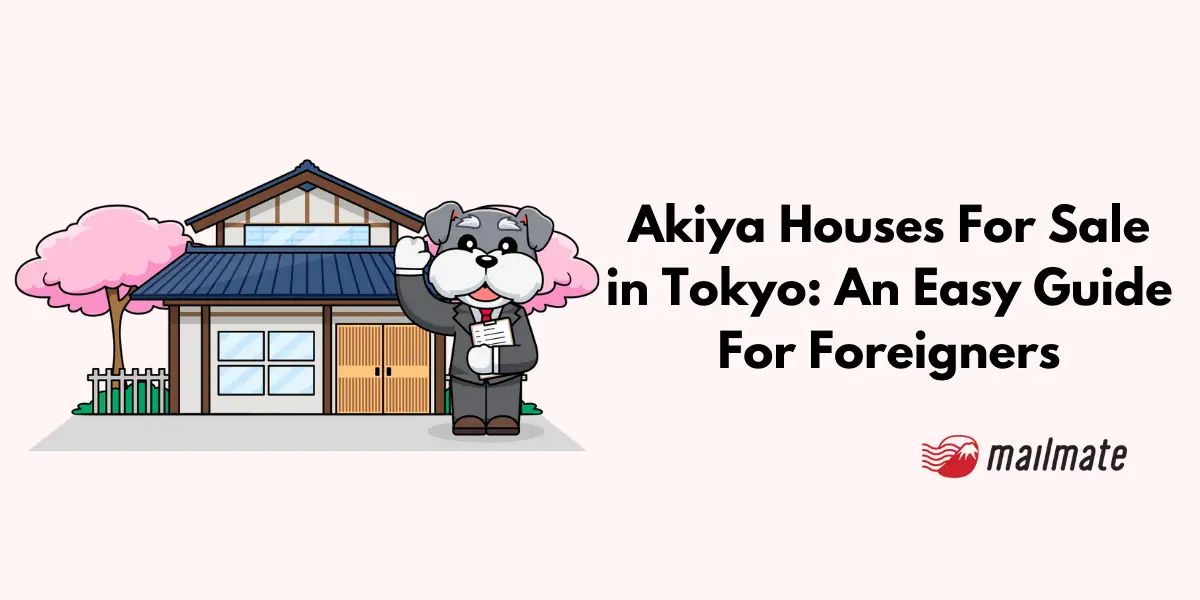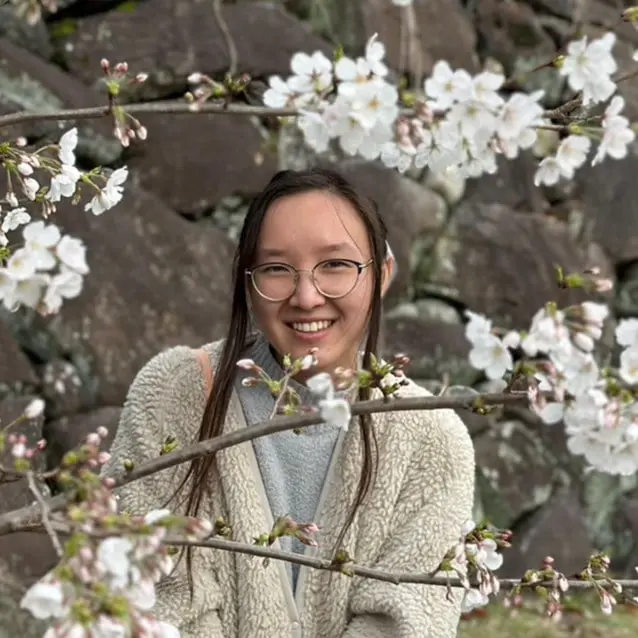Akiya Houses For Sale in Tokyo: An Easy Guide For Foreigners

Are you interested in akiya houses for sale in Tokyo?
This guide will help you know where to search for cheap houses in Tokyo online, the prices, which Tokyo akiya bank to use, the general purchasing process, and what life is like living in these akiya homes in Tokyo.
Legal and practical considerations for buying a Tokyo akiya
Before moving forward with a Tokyo akiya purchase, it’s important to understand a few key legal and practical realities. Japan is welcoming to foreign property buyers, but the process has structure, expectations, and responsibilities that should be understood in advance.
Can foreigners legally purchase akiya in Tokyo?
Yes. Japan allows full property ownership by foreigners, with no restrictions on nationality, residency status, or visa type. Foreign buyers can own land and buildings outright, just as Japanese citizens do.
However, if you are a non-resident, you will need to appoint a tax agent in Japan to receive tax notices and handle required filings on your behalf.
Do akiya purchases come with residency or visas?
No. Owning property in Japan— including akiya—does not automatically grant residency, right to remain long-term, or immigration privileges. Property ownership and immigration status are completely separate legal frameworks.
Can you get a mortgage for an akiya?
Financing is possible, but not guaranteed. Japanese banks generally prefer:
Residents or long-term visa holders
Buyers with local financial history
Properties in structurally sound condition
Many akiya buyers instead use cash or partial financing due to the age and condition of the properties.
What happens if ownership records are unclear?
Some akiya have complicated ownership histories due to inheritance or abandoned estates. In these cases, a judicial scrivener (司法書士) will:
Confirm legal ownership
Ensure the transfer is legitimate
Register the property under your name properly
This step is essential to avoid hidden legal complications later.
Expect hidden repairs and ongoing responsibility
Purchasing an akiya is not just about acquisition—it’s about stewardship. Owners are responsible for:
Property taxes
Maintenance and safety compliance
Preventing deterioration or public hazard issues
Older properties may require structural reinforcement, utility restoration, pest treatment, or asbestos evaluation. These costs should be expected rather than treated as surprises.
Do akiya purchases offer “cheap, easy investment” opportunities?
Sometimes—but not always. Tokyo akiya purchases should be viewed as long-term lifestyle or restoration projects, not quick-flip real estate plays. Many buyers approach them for meaning, space, and a slower pace of life, rather than pure profit.
Where are akiya houses for sale in Tokyo?
When most people think of Tokyo, they picture the bustling city center and its 23 special wards. However, Tokyo Metropolis is much larger than that—it extends all the way to places like Okutama, a mountainous town about two hours by train or car from central Tokyo.
Administratively, Tokyo is divided into 23 special wards, 26 cities, 5 towns, and 8 villages. When browsing various akiya banks for Tokyo, you’ll notice that most of the available akiya properties are located outside the 23 special wards.

The Tokyo Prefecture is broken down into wards, cities, and towns/villages
Most akiya houses for sale in Tokyo will be in:
Okutama – a remote town in far western Tokyo
Hinohara – the only village in Tokyo, also located in the west
Oshima – part of Tokyo’s island subprefecture, south of the mainland
Hino – a city in western Tokyo
Chofu – a residential city just west of the 23 wards
If you’re open to a broader search, consider looking beyond the Tokyo Prefecture itself as most akiya properties are often in the Greater Tokyo Area.
The Greater Tokyo Area includes neighboring prefectures such as Chiba, Saitama, Kanagawa, Ibaraki, Gunma, and Tochigi, where akiya listings and vacant homes are often more affordable and more plentiful, especially in rural or suburban areas.
While central Tokyo rarely has akiya homes available, rural areas and outer suburbs within the Tokyo Prefecture and its surrounding regions offer far more opportunities for those interested in purchasing vacant properties.
Commute analysis from major akiya areas in Tokyo
Distance to Shibuya |
Travel Time |
Monthly Pass Cost |
Last Train |
|
Okutama |
78 km |
2h 15min |
¥15,840 |
22:30 |
Oshima |
120 km (boat) |
1h 45min + 1h boat |
¥23,500 |
22:00 |
Hinohara |
45 km |
1h 45min |
¥12,960 |
23:15 |
Nerima |
15 km |
35min |
¥6,480 |
24:30 |
Hino |
35 km |
1h 10min |
¥9,720 |
23:45 |
Chofu |
25 km |
45min |
¥7,560 |
24:15 |
Akiya houses for sale: Tokyo prices
Many online have regarded a sweet spot price point for a Tokyo akiya house as around 10 million yen in the countryside.
However, house prices can range from 10 million to 50 million yen for single-family homes, depending on whether it's an empty house, near any local or major cities, or in a prime location.
Additionally, understanding the true cost of an akiya purchase goes far beyond the initial property price. Most buyers underestimate the total investment required, which can easily double or triple the listed price when factoring in renovations, legal fees, and ongoing expenses.
Akiya houses on the higher end of the price range typically require fewer renovations—often around ¥1 million or less.
In contrast, lower-priced properties usually need more extensive inspections and renovations, which can significantly add to the total cost.

An example of a Japanese abandoned house that needs major repairs
Total investment breakdown
Cost Category |
Low End |
High End |
Notes |
Property Purchase |
¥3M - ¥15M |
¥20M - ¥50M |
Depends on condition and location |
Legal/Administrative Fees |
¥300K - ¥500K |
¥800K - ¥1.2M |
Includes judicial scrivener, registration |
Inspection & Survey |
¥100K - ¥200K |
¥300K - ¥500K |
Structural, pest, utilities assessment |
Basic Renovations |
¥2M - ¥5M |
¥8M - ¥15M |
Plumbing, electrical, flooring |
Major Structural Work |
¥3M - ¥8M |
¥15M - ¥25M |
Foundation, roof, seismic reinforcement |
Utility Connections |
¥200K - ¥400K |
¥600K - ¥1M |
Gas, water, electricity, internet |
Total First Year |
¥5.6M - ¥28.1M |
¥44.7M - ¥92.7M |
Excluding ongoing costs |
Annual ongoing expenses
Property Tax |
¥50K - ¥300K |
1.4% of assessed value |
Insurance |
¥30K - ¥150K |
Fire, earthquake, liability |
Utilities (if vacant) |
¥60K - ¥120K |
Basic connection fees |
Maintenance |
¥100K - ¥500K |
Seasonal upkeep, repairs |
Management Service |
¥120K - ¥360K |
If using property management |
Which Tokyo akiya bank should I use?
Despite the name, akiya banks are not traditional financial institutions. Instead, they are more like real estate listings, but only for vacant or abandoned homes in Japan.
Many local governments—including those in Tokyo—operate their own akiya banks, allowing users to search for available properties within their specific region.
If Japanese is no problem for you, your best bet is to look at Japanese akiya banks, such as:
To find more specific akiya listings, try searching in Japanese using the format: [Location]市 空き家バンク. This will bring up the local akiya bank for that city.
If you prefer English-language resources, here are two helpful websites for exploring akiya in Tokyo:
AkiyaBanks – This site lists all municipalities within Tokyo. Click on the city or town you're interested in to see if it has an akiya bank available.
Akiya Japan – This site features available properties across the Tokyo prefecture. Note: you’ll need to become a member in order to submit an inquiry.
How do I get an akiya house in Tokyo?

General steps on buying a property in Japan
Since you have a general location for your akiya property, it’s time to purchase it.
If you’ve found a general area where you’d like to buy an akiya in Tokyo, here are the typical steps involved in purchasing and setting up the property.
1. Make a property inquiry and schedule a viewing
Once you've found one or two akiya properties that interest you, submit an inquiry through the akiya bank or listing site. From there, schedule an in-person or remote viewing of the property.
2. File the paperwork
After deciding on a property, you'll begin the purchase process with the help of a real estate agent. This includes:
Submitting a purchase application
Signing the sales contract
Completing other required documents
The property owners may request additional information—your agent will guide you through this process.
After the purchase, you’ll need a judicial scrivener (司法書士) to officially register the property under your name and handle the necessary legal filings. Don’t forget to pay the relevant property taxes.
💡 Tip: If you're a non-resident foreigner, Japanese law requires you to appoint a tax agent.
3. Renovation and setup
If your akiya property needs renovation, hire a local contractor to assess the structure and carry out any necessary repairs. Renovation costs can vary depending on the condition of the property—but many buyers spend around ¥1 million or more to bring the home up to standard.
Most akiya properties require extensive work that first-time buyers often underestimate. Here's what to expect based on property condition:
"Move-in Ready" Properties (¥20M+)
Typically need: Fresh paint, minor repairs, appliance updates
Hidden issues: Aging electrical systems, inefficient heating
Timeline: 1-3 months
Additional costs: ¥1M - ¥3M
"Needs Work" Properties (¥10M - ¥20M)
Typically need: Major system updates, flooring, kitchen/bathroom renovation
Hidden issues: Plumbing problems, roof repairs, insulation
Timeline: 3-8 months
Additional costs: ¥3M - ¥8M
"Fixer-Upper" Properties (¥3M - ¥10M)
Typically need: Complete renovation, possible structural work
Hidden issues: Foundation problems, pest damage, hazardous materials
Timeline: 6-18 months
Additional costs: ¥5M - ¥20M
You’ll also need to contact the local utility providers to set up:
Water
Gas
Electricity
Internet
🛠️ Out of Japan? Use MailMate's Akiya Package MailMate can coordinate directly with local authorities and utility companies on your behalf—so you don’t have to navigate everything in Japanese.
4. Live and manage your property in Tokyo
Once your property is set up, you can either move in or manage it remotely.
If you're not living in Japan full-time, MailMate offers ongoing property management support. They’ll:
Receive your mail, including tax bills and utility invoices
Upload scanned images of the mail’s exterior to your online dashboard
Forward, open, or shred mail based on your instructions
Help ensure bills and taxes are paid on time
What it's like to live in a Tokyo akiya

Living in an akiya Tokyo house is a mix of the Japanese countryside and city life.
The type of neighborhood varies, ranging from suburban areas to small-city atmospheres with many shops, stores, restaurants, and schools suitable for families and individuals.
Although these akiya homes are far from the center of Tokyo, many offer access to public transportation, usually a train, allowing you to travel to central Tokyo. While these akiya are in walkable areas, you might need a car to go further distances.
Tokyo real estate investment comparison
Before committing to an akiya purchase, it's valuable to understand how this investment compares to other property options in Japan, such as new properties, etc. This analysis helps ensure you're making the most suitable choice for your specific situation and goals.
Investment Type |
Initial Cost |
Annual Returns |
Liquidity |
Maintenance |
Best For |
Tokyo Akiya |
¥5M - ¥50M |
0-3% (if rental) |
Very Low |
High |
Lifestyle, retreat |
Tokyo Apartment |
¥30M - ¥100M |
3-6% |
Medium |
Low |
Investment income |
Osaka Akiya |
¥2M - ¥30M |
2-5% |
Low |
High |
Lower cost entry |
Vacation Rental |
¥20M - ¥80M |
5-12% |
Medium |
Medium |
Tourism income |
REIT Investment |
¥100K+ |
3-7% |
High |
None |
Passive income |
Most akiya properties in Tokyo's outer areas have limited rental potential due to location and condition factors. However, some opportunities exist:
Short-term vacation rentals
Potential daily rates: ¥8,000 - ¥25,000
Occupancy rates: 20-40% annually
Annual gross income: ¥600K - ¥3.6M
Operating expenses: 40-60% of income
Long-term residential rentals
Monthly rent potential: ¥50K - ¥150K
Vacancy risk: High in rural areas
Annual gross income: ¥600K - ¥1.8M
Management challenges: Language barriers, maintenance
Frequently asked questions
Can foreigners legally buy akiya houses in Tokyo?
Yes. There are no restrictions on foreign ownership of real estate in Japan. However, non-resident foreigners must appoint a tax agent to handle property tax obligations.
Do I need to be a Japanese resident to purchase an akiya?
No. You do not need to be a resident, but non-residents face additional requirements such as appointing a tax agent and may encounter difficulties securing financing.
What happens if I can't find the original owner of an akiya property?
Some akiya have unclear ownership due to inheritance complications. A judicial scrivener can help verify legal status and guide you through proper channels to facilitate the purchase.
How do I assess if an akiya is structurally sound?
Hire a professional home inspector to evaluate the building’s structure, check for pests, and inspect utility systems. Inspections typically cost ¥100,000–¥500,000 but are highly recommended.
What are the most common hidden problems with akiya houses?
Common issues include outdated electrical wiring, plumbing problems, roof damage, foundation cracks, pest infestations, and possible asbestos in older homes.
Can I renovate an akiya to modern standards?
Yes, but it requires careful planning and budgeting. Renovations for fixer-uppers can range from ¥5 million to ¥20 million. You’ll need to work with local contractors and may require permits for structural changes.
How far are most Tokyo akiya houses from central Tokyo?
Most are 1–2 hours away by train. For example, Okutama is about 2 hours 15 minutes from Shibuya, while Chofu is around 45 minutes away.
Do I need a car to live in an akiya area?
Many areas have train access, but a car is often useful—or necessary—for errands and travel within more rural or mountainous neighborhoods.
In closing
There are plenty of akiya houses for sale across Tokyo, offering you a chance to find a property that fits your needs. While it may take a few days of research to discover the right one, owning an akiya in Tokyo can be a meaningful milestone—or even a convenient vacation home in Japan.
While purchasing and managing an akiya property involves significant challenges, working with experienced Tokyo akiya banks, knowledgeable local real estate agents, and specialized services can help navigate the complex process more effectively.
Spending too long figuring out your Japanese mail?
Virtual mail + translation services start at 3800 per month. 30-day money-back guarantee.

